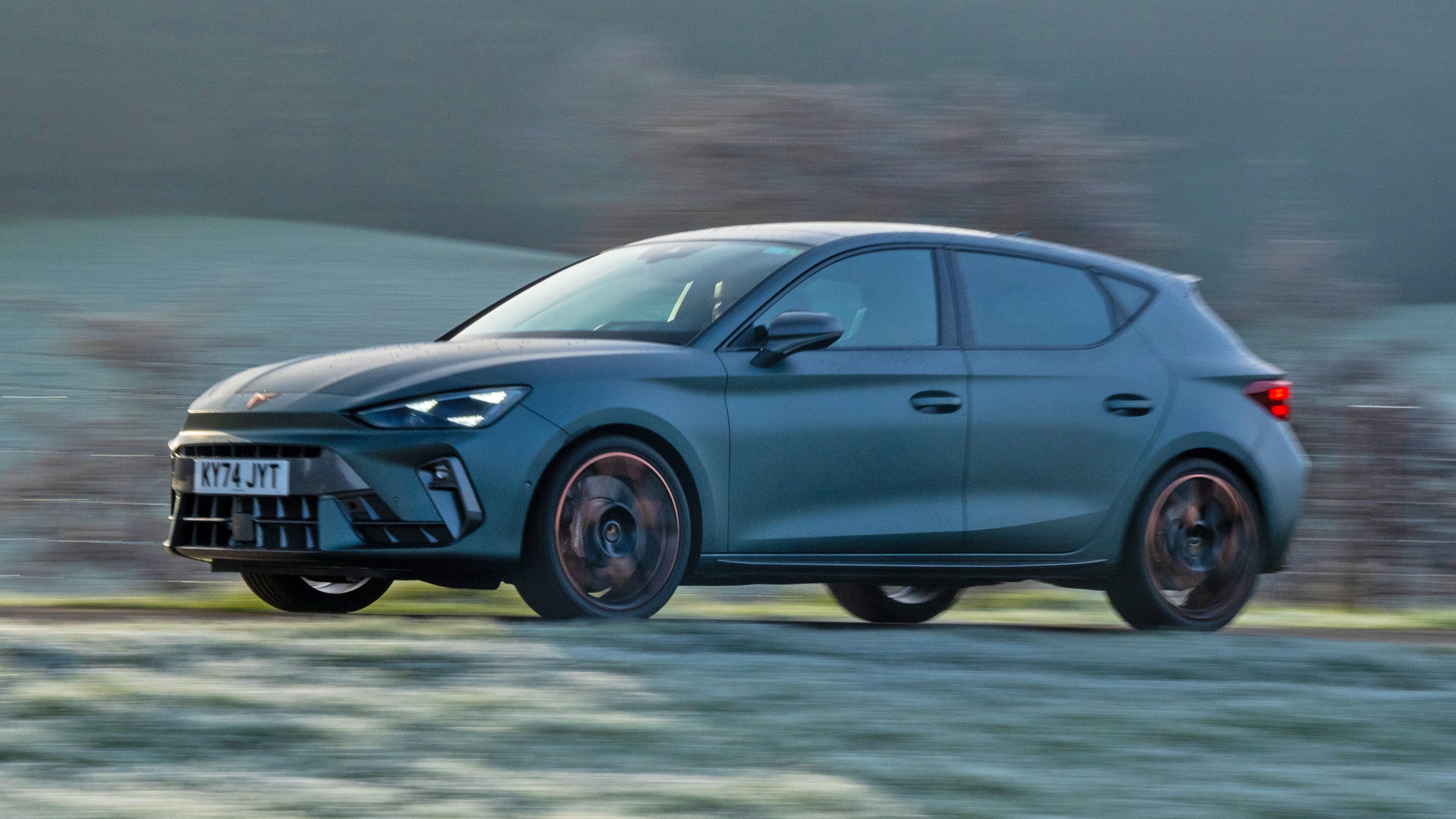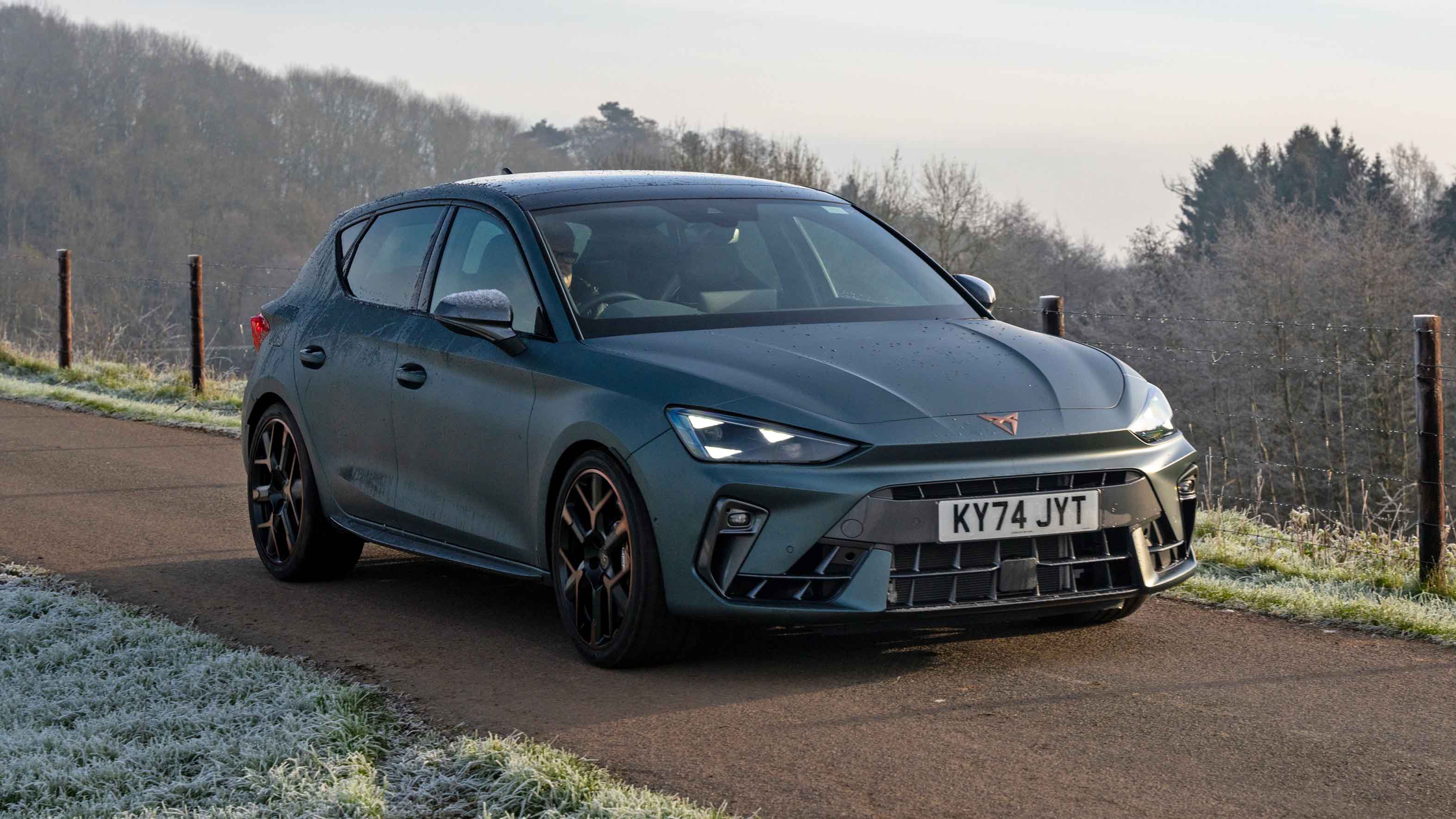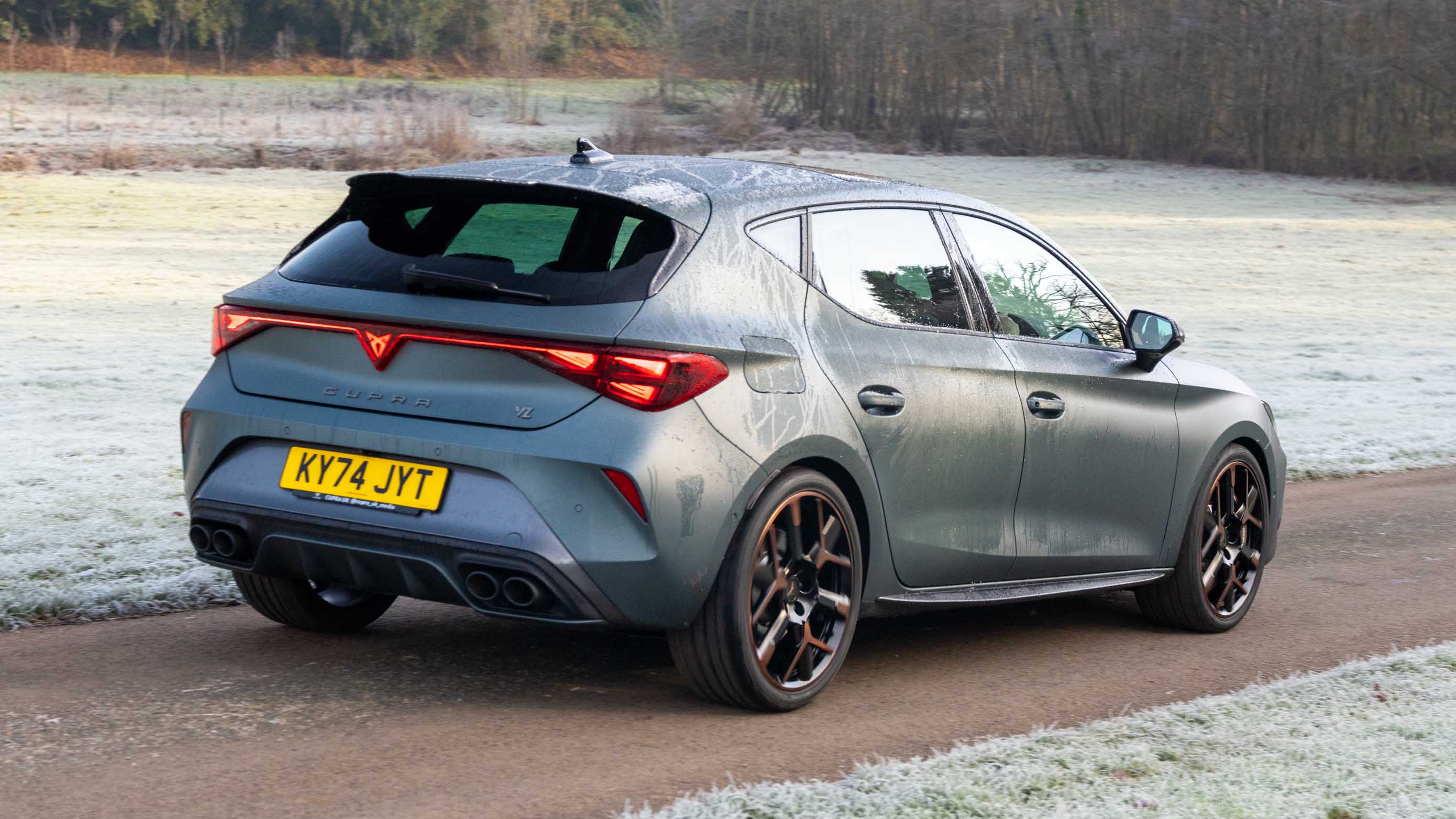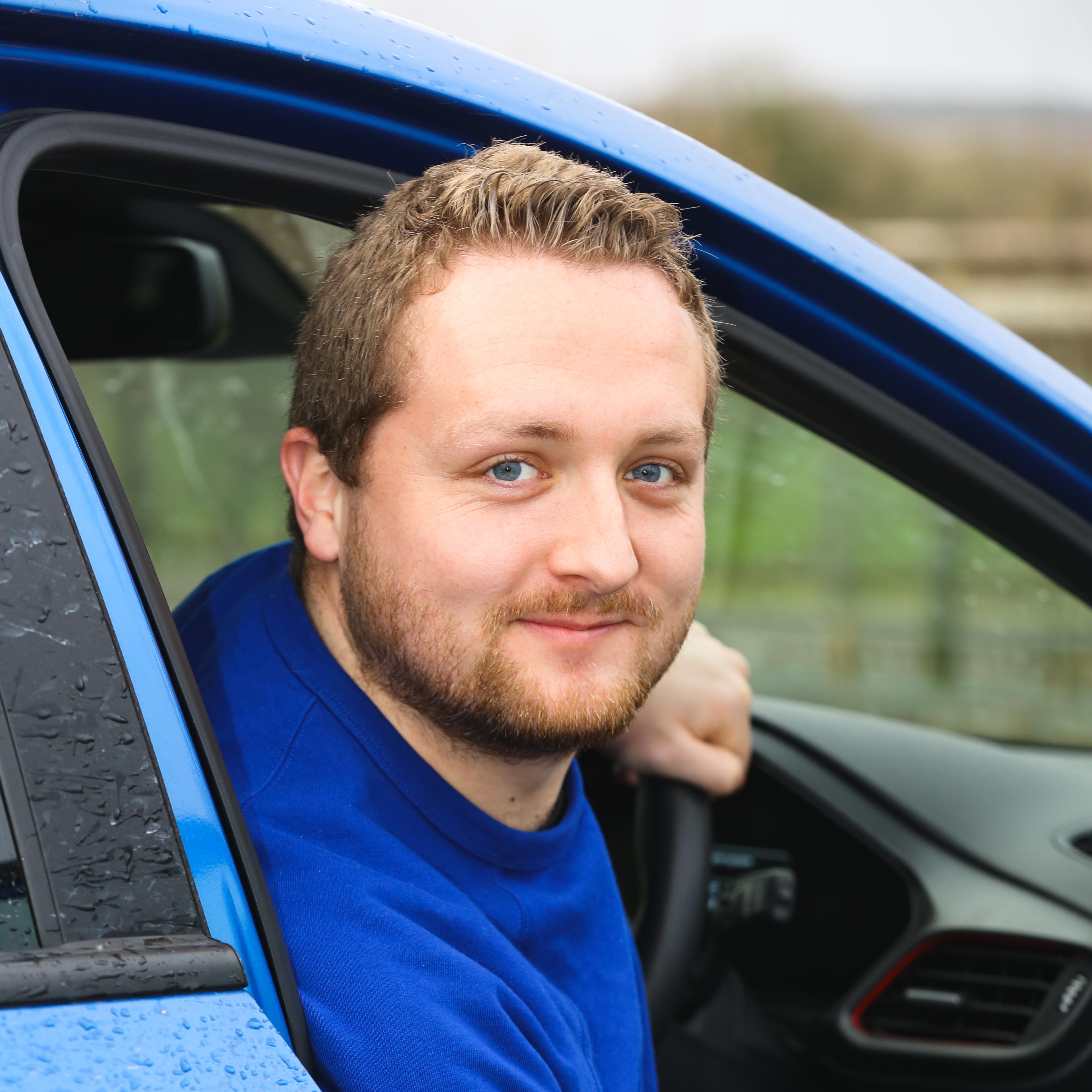













Cupra Leon Review
For some reason, the Cupra Leon and SEAT Leon are still sold side-by-side – despite the Cupra stealing the SEAT’s lunch and getting an exclusive facelift.
And that’s harmed the perception of both cars. Why would you buy a SEAT when you could buy a Cupra, but are Cupras still impressive when many have the entry-level engine?
- Looks sporty and subtle at the same time
- Calms down on the motorway
- Fun to drive
- Diluted lineup removes some brand appeal
- Infotainment could be easier to use
- Small boot on plug-in hybrids
Should I buy a Cupra Leon?
Cupra used to be a sub-brand of SEAT, and those five letters guaranteed a powerful engine and a raucous driving experience.
But you might’ve forgotten that SEAT exists. The wider VW Group seems to have done. The Cupra Leon is available with a few of the same engines as the SEAT Leon, but with a sportier, more eye-catching look. And it’s recently been facelifted, so now it does at least look different to the SEAT version.
"There’s a Cupra Leon for drivers who prefer agility over outright power, and for those who want mind-bending speed and grippy stability"
Even though it’s more expensive than the equivalent SEAT, the Cupra Leon is unsurprisingly more popular. The more affordable end of the Cupra Leon range means the sporty styling is for the many, not just the few.

The flipside of that is that Cupra no longer necessarily means powerful and fast. The Leon’s available with between 150hp and 300hp, and it’s hard to tell which is which. It’s hard to get excited about a mild-hybrid 1.5-litre petrol engine, and that makes the Cupra look quite subtle against the likes of the Ford Focus ST and Honda Civic Type R.
If you’re a real hot spotter, the entry-level engines get grey exhaust finishers, the plug-in hybrids get copper ones, and the range-topping performance models have a quartet of proper circular exhausts.
And the trim levels are split into two sides, with lower-powered versions being V1, V2 or V3, whereas higher-powered engines are grouped into VZ1, VZ2 and VZ3 – VZ referencing the Spanish word ‘veloz’ for ‘fast’. If the VW Group wanted to keep Cupra special, it would’ve kicked off the range at VZ1 and kept the lower-powered engines for SEAT.
Interior and technology

It’s amazing what a few copper accents and some considered material choices can do for a car’s interior. While the SEAT Leon risks feeling a little drab, the high-contrast bronze tones lift the ambience of the Cupra's cabin. There’s also a carbon-fibre effect on the perforated leather steering wheel. A premium price tag demands a premium product, and the Cupra manages to feel similarly plush to the BMW 1 Series and Audi A3.
The touchscreen looks really impressive – it’s crisp and colourful, with a modern-looking home screen that features clear sections. We’d love the user experience to match the initial jazziness, but everything below the main menu takes just one or two too many touches to complete. It’ll have you looking away from the road more often than you might expect.

Equipment levels are stronger than for the SEAT Leon, which offsets the Cupra’s higher price a little. A reversing camera is standard on the vast majority of trim levels, for example, along with sports seats and even wireless phone charging. The V1 trim also includes 18-inch alloy wheels, adaptive cruise control, a configurable digital instrument cluster, the large 12.9-inch touchscreen – with online features and wireless Apple CarPlay – and LED headlights.
V2 trim adds electrically adjustable and heated front seats, plus keyless entry, wraparound interior lighting and suede-like upholstery. V3 models get extra driver assistance kit, copper wheels and Dynamic Chassis Control – which lets you choose a comfortable or firm setting for the suspension.
Confusingly, VZ1 trim (the first of the fast ones) broadly matches V2 for equipment, along with the DCC and upgraded Matrix LED headlights. VZ2 adds park assist and leather; VZ3 adds juicy bits like upgraded brakes, carbon-backed bucket seats and forged alloys.
Practicality

You get in the Cupra Leon (or the SEAT version) and wonder why so many people feel they need SUVs. There’s a strong amount of rear legroom, and plenty of headroom, plus a big glovebox and lots of useful storage upfront.
Rear-seat passengers get the usual seatback pockets, fold-down cupholders and USB sockets. It’s a little strange that the Isofix points aren’t more accessible – most VW Group cars have easy-to-find cutouts for installing child seats.

The boot capacity of 380 litres doesn’t sound massive, but it’s a deep space that’ll swallow a couple of large suitcases – or a pushchair and a few shopping bags – with ease. A ski hatch allows you to carry long items in between two rear-seat passengers.
At the lesser end of the scale, the plug-in hybrid models are a bit limited on boot space – they lack the depth of the petrol cars because the battery pack is stashed underneath, and the remaining 270-litre luggage capacity is some way short of even the smaller SEAT Ibiza.
If you need more boot space than the Leon hatchback offers, the Cupra Leon estate offers up to 620 litres (470 litres for the plug-in hybrid).
Engines and performance

Fittingly for its sporty styling, the Cupra Leon comes with up to 310hp – and that enables a 0-62mph time of just 4.9 seconds. It's a Golf R with bronzer.
You’ll need the top-rung estate for 310hp and four-wheel drive; the hatchback maxes out at 300hp and is always front-wheel drive. The 300hp model hits 0-62mph in 5.7 seconds, and that much power through the front wheels means there’s sometimes a little bit of torque steer (where the engine’s power pushes the car left or right). As such, the front-driven Cupras are a bit more entertaining than the steadfast four-wheel-drive ones.
That acceleration and power, however, is on a par with the Golf GTI Clubsport, while below the top-spec Cupras is one with 245hp that matches the Golf GTI. The 245hp engine is rare – it’s a middle ground between the affordable entry-level models and the fiery range-toppers – but hits 0-62mph in a speedy 6.4 seconds. Even on this model, the top speed is 155mph.

The plug-in hybrid engines are interesting choices, with the duality of petrol power and silent electric driving. When you want full acceleration, the power sources combine to create either 204hp or 245hp – with 0-62mph times of 7.7 and 6.7 seconds respectively.
When the Leon was facelifted, the plug-in hybrids gained a much bigger battery. Now equipped with a near-20kWh battery, the Leon eHybrid versions can manage 75-82 miles on a charge – which is more than many early EVs! The more powerful eHybrid also gets a power boost to 272hp, in line with the new Golf GTE.
Finally, one of the most popular Cupra Leon models is the entry-level 1.5 petrol engine. With 150hp and a 0-62mph time of nearly nine seconds, this engine offers decent power for everyday driving but won’t give you hot hatch excitement. There is a manual gearbox available, though, which’ll win this engine points from keen drivers.
As good as the DSG automatic gearboxes are, we wish the manual gearbox was available further up the range – it gives a lovely gearshift action, which feels slick, positive and weighty.
Driving and comfort

There’s something in the Cupra Leon lineup for both drivers who prefer agility over outright power, and drivers who want mind-bending speed and grippy stability.
Our test car had the speed-sensitive power steering fitted to high-spec V3 and the more powerful engine options. The steering weight was consistently well-weighted; there are no unwelcome surprises mid-corner and the connection between you and the road is always maintained.
As standard, the ride is always on the firm side – which is what you’d expect in a hot hatch. It gets better at speed, with the car soaking up motorway expansion joints nicely. Around town, there are a few harsh impacts from potholes and speed bumps, but you’d get a similar experience in most cars.
More expensive models also get the Dynamic Chassis Control system, which lets you choose the firmness of the suspension within the Individual drive mode. This improves the car’s all-round ability – you can have a softer ride on the motorway, or firm it up for sporty driving.




















































